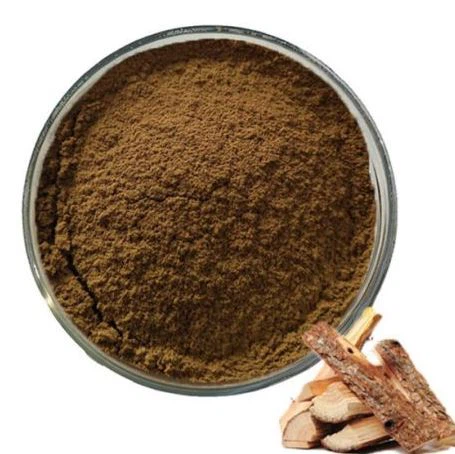Saponins of Quillaja saponaria extract is a new active ingredient that is extracted from the wood and bark of the soapbark tree also known as Quillaja saponaria. The end-use product Quillaja Extract is intended to inhibit the growth of pathogenic fungi and nematodes in ornamental plants, food crops and turfgrasse. Use of this extract as a pesticide active ingredient is not expected to harm humans, nontarget organisms, or the environment.
I. Description of the Active Ingredient
The active ingredient saponins of Quillaja saponaria is a dark brown liquid with a sweet,
pungent odor. The saponins are extracted from the wood and bark of the soapbark tree
(Quillaja saponaria). The product Quillaja Extract contains 8.60% by weight of the active
ingredient.
II. Use Sites, Target Pests, and Application Methods
o Use Sites: Vineyards, orchards, field crops, ornamentals
o Target Pests: Nematodes, pathogenic fungi
o Application Methods: Liquid formulation is applied using ground equipment with
a band sprayer, soil fertilizer shanks, drip irrigation, or aboveground sprinkler
systems.
III. Assessing Risks to Human Health
No harmful effects are likely to occur to workers or the public from use of Quillaja Extract
when it is used to control nematodes and pathogenic fungi in vineyards, orchards, field
crops and ornamentals. Laboratory studies on rats and pigs indicate that the active
ingredient is not toxic or infective following lung, oral, or skin exposure. Quillaja saponins
are widely used in food items such as flavoring agent, food additives and soft drinks.
There are no reports of negative effects following regular human exposure and
consumption of Quillaja extracts.

Is quillaja extract safe
It is likely safe when used in amounts found in food. Quillaja is toxic when ingested orally in large amounts. Severe toxic effects following the ingestion of large doses of the bark include liver damage, gastric pain, diarrhea, hemolysis, respiratory failure, convulsions and coma.
What is quillaja used for
Quillaja extract has been used orally in traditional medicine to relieve cough and bronchitis, and topically to relieve scalp itchiness and dandruff. Reports show that quillaja can depress cardiac and respiratory activity and induce localized irritation and sneezing.

What are the benefits of quillaja extract
USES & EFFECTIVENESS
Insufficient Evidence to Rate Effectiveness for...
TAKEN BY MOUTH
Cough.
Bronchitis.
Breathing problems.
Other conditions.
APPLIED DIRECTLY TO THE AFFECTED AREA
Skin sores.
Athlete's foot.
Itchy scalp.
Dandruff.
Vaginal discharge.
Other conditions.
What is quillaja extract made of
Quillaja saponaria extract (also spelled “quillaia”) is a dark brown liquid made from the logs and bark of the soapbark tree. It has a sweet, pungent odor.[1] The word quillay is derived from the native Mapuche word quillean, which means “to wash.”[2] The soapbark tree is a large evergreen with shiny, leathery leaves and a thick bark. It is native to Chile. The wood for the extract is often obtained through regular pruning activities that improve forests without killing the trees.
For bulk quillaja saponins, please contact us at email:herbext@undersun.com.cn
References:https://www3.epa.gov/pesticides/chem_search/reg_actions/registration/fs_PC-097095_07-Aug-07.pdf
https://www.drugs.com/npp/quillaja.html
https://www.rxlist.com/quillaia/supplements.htm

